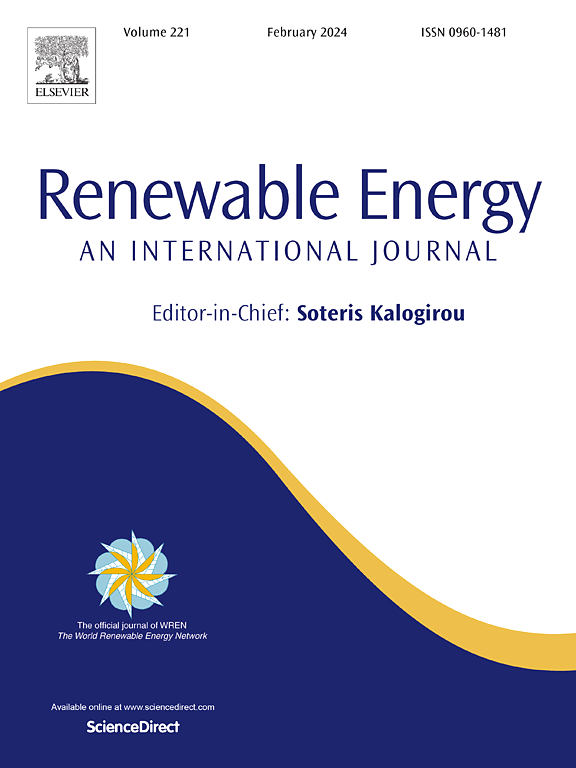研究了管道封装可移动PCM墙体的热性能及其对减少夏季室内热增益的影响
IF 9
1区 工程技术
Q1 ENERGY & FUELS
引用次数: 0
摘要
相变材料(PCM)在建筑围护结构中的应用被认为是降低建筑运行能耗的一种有效技术。在这项研究中,提出了一种新颖的方法,通过使用管道将PCM封装到墙壁中,允许其通过使用压缩空气进行移动。提出了四种实验验证的热模型,即管道封装的可移动PCM (PEM-PCM)墙体(模型1)、PCM固定在外部的墙体(模型2)、PCM固定在内部的墙体(模型3)和不安装PCM的墙体(模型4),以比较它们在夏季的能源效率。采用不同的阈值上限(Ttr,up)和阈值下限(Ttr,low)来探讨各种阈值组合控制策略对墙体热工性能的影响。结果表明,最有效的操作方案是Ttr,最高27℃,最低25℃。从长期运行来看,模型1的夏季室内累计热增益比模型2、3和4分别低10.65%、10.85%和11.4%。值得注意的是,9月份显示出最大的节能潜力,与模型4相比,模型1每月累计室内热增益减少了54.12%。本文章由计算机程序翻译,如有差异,请以英文原文为准。
Investigating the thermal performance of a pipe-encapsulated movable PCM wall and its impact on reducing indoor heat gain during summer
The utilization of phase change materials (PCM) in building envelopes is considered to be an effective technology for reducing energy consumption during building operations. In this study, a novel approach is presented for integrating PCM into walls by encapsulating it using pipes, allowing for its mobility through the use of compressed air. Four experimentally validated thermal models, pipe-encapsulated movable PCM (PEM-PCM) wall (Model 1), wall with PCM fixed to the exterior (Model 2), wall with PCM fixed to the interior (Model 3), and wall without PCM (Model 4), were proposed to compare their energy efficiency in summer. Different upper threshold limits (Ttr,up) and lower threshold limits (Ttr,low) were employed to explore the impact of various threshold combinations control strategies on the thermal performance of the wall. The results show that the most effective operating scheme is Ttr,up of 27 °C and Ttr,low of 25 °C. In terms of long-term operation, cumulative summer indoor heat gain of Model 1 is 10.65 %, 10.85 % and 11.4 % lower than that of Model 2,3 and 4. Notably, September demonstrates the greatest potential for energy savings, with Model 1 reducing the monthly cumulative indoor heat gain by 54.12 % compared to Model 4.
求助全文
通过发布文献求助,成功后即可免费获取论文全文。
去求助
来源期刊

Renewable Energy
工程技术-能源与燃料
CiteScore
18.40
自引率
9.20%
发文量
1955
审稿时长
6.6 months
期刊介绍:
Renewable Energy journal is dedicated to advancing knowledge and disseminating insights on various topics and technologies within renewable energy systems and components. Our mission is to support researchers, engineers, economists, manufacturers, NGOs, associations, and societies in staying updated on new developments in their respective fields and applying alternative energy solutions to current practices.
As an international, multidisciplinary journal in renewable energy engineering and research, we strive to be a premier peer-reviewed platform and a trusted source of original research and reviews in the field of renewable energy. Join us in our endeavor to drive innovation and progress in sustainable energy solutions.
 求助内容:
求助内容: 应助结果提醒方式:
应助结果提醒方式:


